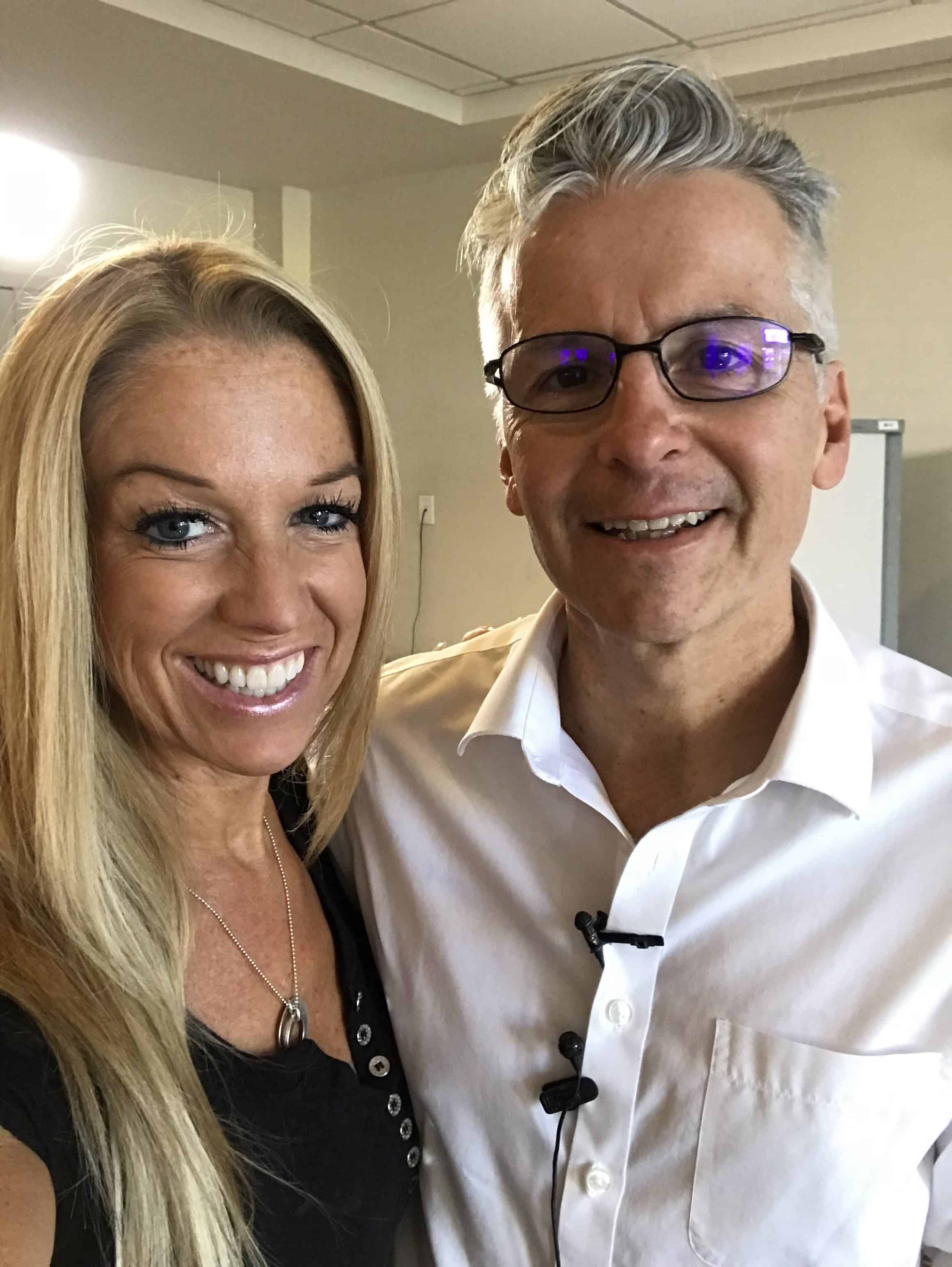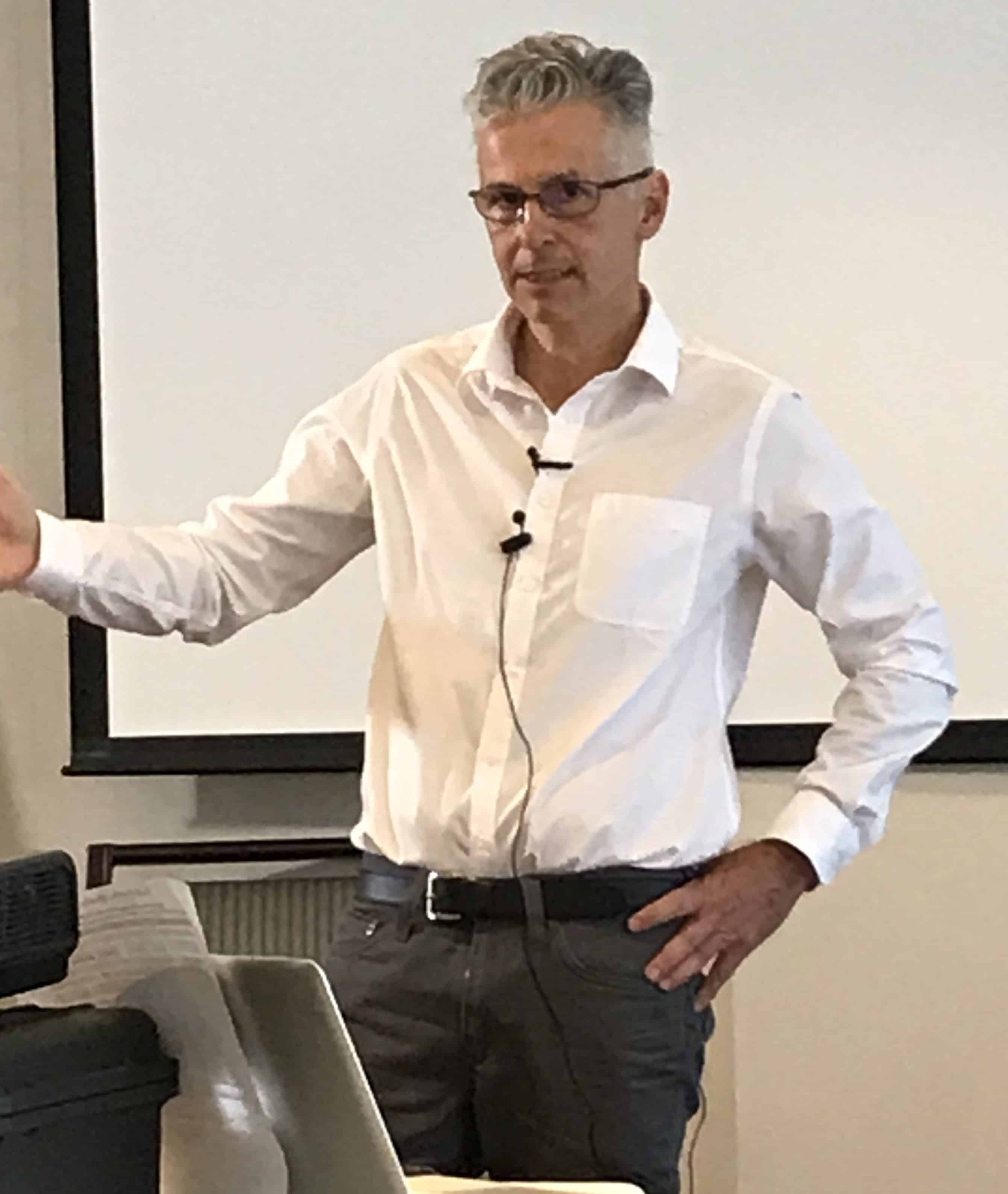Are you scared of cameras? Do you lose your cool and look like a goof when placed under the spotlight? Do you know that you should be doing more videos to promote your business, that videos are the future of social media marketing, and somehow, you are just not doing it?
ON CAMERA PERFORMANCE WITH DAN CORDLE

Dan Cordle is an expert with looking good on camera and presented an amazing workshop at CAPS BC event on Saturday, April 20th, 2019 at Granville Island Hotel.
Dan’s main message is all about connecting with your audience. Here are my notes from the event.
Dan told us about his journey as an actor. He spent his youth travelling around the world. Dan is shy by nature and found the theatre to be a great place to connect. His interests brought him to graduate from NYC University. He learned theatre games a different type of improvisation where it could be sometimes funny, sometimes dramatic. It is designed to make the audience FEEL something particular and be able to name it with one word. The best way to make people feel something is to feel it yourself. He realized that the result you are trying to achieve with your video, you need to feel it yourself and get the engagement you aim for. Dan started teaching improv for live performance and for the camera.
SIMILARITIES BETWEEN ACTORS AND ENTREPRENEURS.
Creative and imaginative. Actors are thinkers and like to explore.
DIFFERENCES BETWEEN ACTORS AND ENTREPRENEURS.
Most actors try to be super engaged in the process. They love the rehearsal where they get to explore and try things, feel.
Entrepreneurs tend to be focused on outcomes instead of the process.
DO YOU HAVE IT OR NOT?
There is the idea that you have it, or you don’t have it. Who decides that? It is just a perspective. Just like Van Gogh’s art is appreciated because of the way he lived and not for the painting itself. The value is the personal connection.
PERSONAL CONNECTION
So how do we create personal connection? By being yourself, you find your audience. How can you be who you are and make it work? Give all you have and be honest. It is not about you. It’s about the person you are addressing. You need the audience. It is all about connection. The beginnings of public speaking, theatre, religion were based on connection. They involve the community.
ESCAPE FROM WHO YOU ARE
Dan learned to be authentic as he was using acting to escape who he was. One year, he had to play a part that was very similar to his own life. He had a harder time with it as being himself was not his forte. One teacher asked him how he was feeling, actually feeling, that moment. He was scared to open up. He was scared of having to be himself.
Instead of starting from who you want to be seen as (the put together version of yourself), start from where you are now.
HOW THE INDUSTRY CHANGED
The acting industry was based on skills. They were practising speaking with a stone in their mouth, practising gestures, reading books on facial expression, copying what specific expressions were supposed to look like and reproducing them. Now the new tradition of acting is teaching you a different method to feel the role and becoming it, as opposed to technically use skills to reproduce it.
Theatre actors become the characters while film actors bring the characters to them. How do you do either or on camera? You have to enlarge who you are as a person. You want to figure out where is this character already existing inside of you. If you see the role as something so far from you, you will never be able to play that role, until you admit that you have a bit of this character inside yourself. An actor that would be given the role of Hitler, would never be able to play the role, even with the haircut and the moustache, unless he acknowledges and accepts and finds that part inside himself. Expanding who you are and be as many things as possible, will allow you to be comfortable in playing any types of roles and truly becoming comfortable being them. Standing in your discomfort and slowly introducing it is the first step.
THE CAMERA
Little by little, you can start accepting the camera. You have to spend time doing it instead of staying away from it. Start learning a few skills and techniques to get comfortable. Take on the journey to self-discover yourself. When you do your video, your audience is not there with you at the moment, they will see it later, they are not really there. A camera is a mirrored light so that you can see yourself in it. It is very different than a mirror as you are not really just looking at yourself. You are recording yourself. You have to create an experience as if you were appearing as a real-life event. You want to take the camera as someone you are flirting with.
OBJECT THERAPY
Remember a time you were a child when you would talk to a teddy bear. You had a real relationship with the teddy bear. Tap back into these feelings so that you can talk to the camera as if you had a relationship with it. Take an object, study it, try to take it in and decide it is a meaningful relationship in your life. Invest in your relationship. As if the object was, for example, your sister that lost her husband to cancer. Truly feel it and talk to the object with conviction. Be respectful of the objects’ thoughts and feelings. The camera is somebody that you love, someone that has real significance for you. Tap into your feelings for that person. Have somebody in your mind when you speak on camera. Pretend the camera is a person and visualize exactly who you are talking to. Just like writing a letter to someone, you are writing to them, specifically, with emotions and specifics. Do the same when you record a video. Look at the camera and stay open to it.
WHAT PEOPLE DO
We are taught how to use the 8 first seconds of a video to talk about the problem we fix, then we position ourselves as the solution, then we have a call for action then you finish with a splashy outro. Technically, if you do all of these, you should have a great video. However, it is not true. Most people following this model are missing the point. What is essential is human-contact. Successful videos are sharing experiences more than trying to sell something. They are marketing a lifestyle. Videos are there to create a relationship so that people want to spend time with you. Once in a while, you can also create a video that does have something to sell. You have already identified yourself as a genuine person. You already have a relationship with them so when you introduce one video with a sale, you can be natural about it. Base your videos primarily on relationships. If you don’t have a personal connection with the viewer, you will need to have an offer in which you have the monopoly, that nobody else offers. For every service, there are multiple offers. People will choose to work with the person that they have a relationship with.
People watching your video don’t want the information that you are giving in the video, they want to BE with you. You are creating a relationship.
STATING YOUR CASE
Do you need to introduce what you will talk about before talking about it? You never really want your listener to be a step ahead. You need to be a step ahead of them. Don’t indicate anything you will do, don’t tell them what you will do, just do it and keep them engaged. Telling people ahead no longer works. It is not filled with feelings. You have to be passionate. In order to make people feel your passion, you can’t stay inside your comfort zone. Get outside the perimeter. Be passionate about what you are talking about and step outside the box.
The only time where you want to introduce what you will be doing is if you do “How-To Videos”. If you teach people how to do something, then you need to tell them what you will be teaching them in the video.
BASIC NEEDS
Water, food, air, clothing, house (shelter), companionship, love friendship, etc. If you have a restaurant, you are fulfilling a basic need: food. In your business, what basic need are you fulfilling? What need are you an answer for? Lean in the basic needs and use them in your marketing. Present your videos as answers to the primary needs.
You can make the same video over and over again in different ways. Get intimate with them, bring them in a journey with different lights, change your tone of voice, getting intimate with them, take them to your favourite place and do the videos somewhere else than your normal office-business background. Take your phone with you and create a powerful experience.
The basic needs are what connect us all. We all share them. If we get hungry together, we will eat together. All life is struggling to live. Living is not so easy. We live in a universe that is apparently not really living. It requires energy to maintain. Connect to speaking on the level of needs. A whole different approach to things. Tap into the struggles of life.
CATEGORIES
- Social media videos, meant for your inner-circle, nurturing your list and designed for your social media followers and your closed-ones. These create connection and relationships. Not selling, not pushing products, being hospitable, caring. You can have a call to action like, sign up for my newsletter if you want to hear more. Make it be like you are giving value. We get to be in touch, be upfront about it instead of making it a dishonest sign-up sheet.
- Potential clients: different videos with a slightly different approach. Not ‘in your pyjamas’ type of videos.
- Specials, hero videos. Once a quarter meant to make a splash. Like throwing on a party at your house. You clean up the house, you cook in advance. This video will be highly shareable and may go viral. You may want to get some help for this video. You may have a script and invest more in these videos. Practice them in advance. You will also have practised while doing the other types of videos which are all meant to refine your video skills.
- Promo videos. If you are speaking at a great venue, hire a set of people on camera, a sound person, etc. and get great footage of your talk for a great video, edit it and create a full promo video. Best pieces.
PRACTICAL IDEAS – O.P.E.N. UP
Objective: What is your objective? What do you want? Stay connected to your objective.
Passion: Get passionate about the thing that you want. Believe it with all your heart and leave behind the elements that inhibit you from being genuine in public. Let it dissolve. What is the demon that keeps you from fully being who you are?
Eye: Don’t look at the lens, look through the lens, to reach the people you are trying to reach. Use your eyes to get your message across. Engage with your eyes, avoid the ‘dead-eyes’ factor. As if you were looking into your audience’s eyes.
Nuances: Accept yourself. Watch yourself on camera, edit your videos yourself and get used to seeing yourself. You are much more than the simple reflection of a mirror. Appreciate all the nuances. Start appreciating who you are, just like you are, with all your angles.
UP: Be physically upright and open to the camera. Open as if you are telling the world, here I am, where is what I am, come and get it! Create deep contact.

Dan Cordle is an actor, director, and fine art photographer and founder of The Film Practice, where he teaches On-Camera Performance for Entrepreneurs, Speakers and Performing Artists in NYC and online.
With a background teaching Theatre Games and Improvisation for the Camera at the prestigious NYU Graduate Acting Program Dan now uses many of the same techniques to help people be less self-conscious and more fully themselves on video – so that they attract ideal clients who resonate with who they really are and what they offer.

